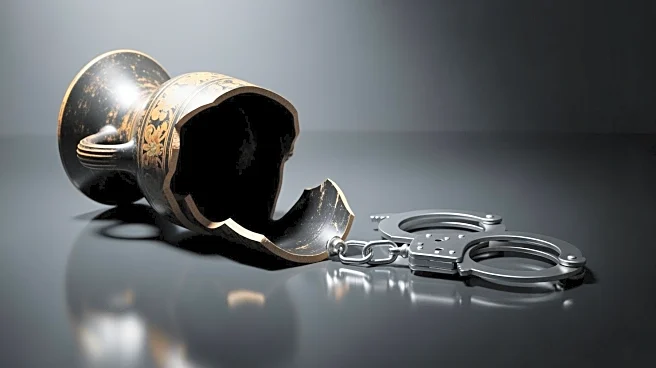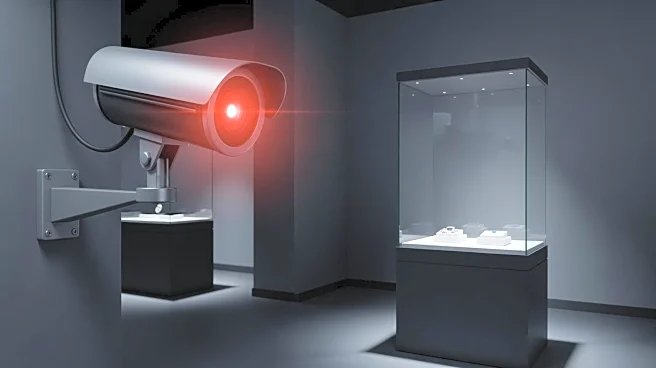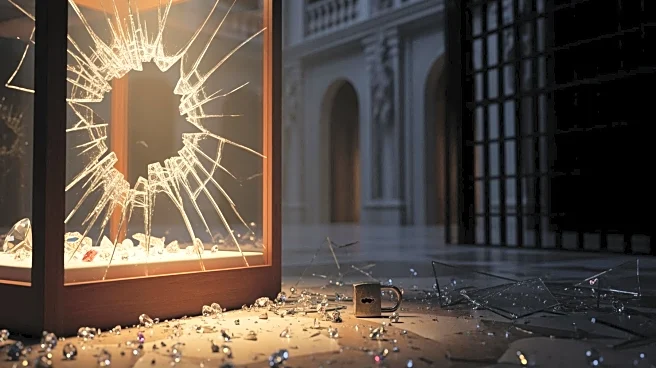What's Happening?
French authorities have made two arrests in connection with the recent Louvre heist, marking a significant breakthrough in the investigation. The theft, which occurred in just seven minutes, exposed critical
security weaknesses at the iconic museum and dealt a blow to French pride. The arrests come one week after the daring robbery, which involved four thieves and highlighted vulnerabilities in the museum's security systems. NBC News' Raf Sanchez reports from Paris, noting the swift action taken by law enforcement to address the security breach and apprehend suspects involved in the high-profile case.
Why It's Important?
The arrests in the Louvre heist investigation are crucial for restoring confidence in the security measures of one of the world's most famous museums. The theft not only exposed vulnerabilities in the museum's security systems but also raised concerns about the protection of cultural heritage. The swift response by French authorities demonstrates their commitment to safeguarding national treasures and maintaining the integrity of cultural institutions. The case has garnered international attention, underscoring the importance of robust security protocols in preventing similar incidents in the future.
What's Next?
With the arrests made, French authorities are likely to continue their investigation to uncover the full extent of the heist and identify any additional suspects involved. The focus will be on recovering stolen items and enhancing security measures at the Louvre to prevent future breaches. The incident may prompt other museums and cultural institutions to reassess their security protocols and implement more stringent measures to protect valuable artifacts. The outcome of the investigation could lead to broader discussions on museum security and the preservation of cultural heritage.
Beyond the Headlines
The Louvre heist highlights the ongoing challenges faced by cultural institutions in balancing public access with security. As museums strive to make art and history accessible to the public, they must also contend with the risk of theft and vandalism. The incident serves as a reminder of the need for continuous evaluation and improvement of security measures to protect cultural heritage. Additionally, the heist may spark debates on the ethical implications of art theft and the responsibilities of institutions in safeguarding their collections.











